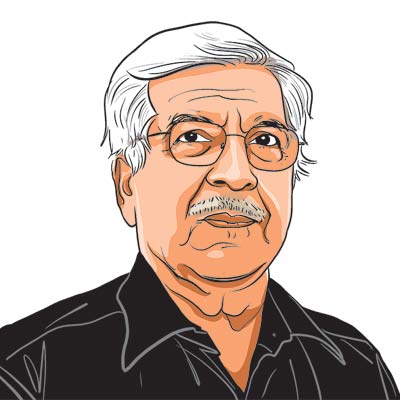Opinion The Bibliotheca Alexandrina
I have always believed that large countries with ancient civilizations should invest both in resurrecting their past and in science for the future.
I have always believed that large countries with ancient civilizations should invest both in resurrecting their past and in science for the future. On recreating the past creatively,my favourite example is the Bibliotheca Alexandrina in the fabled city of Alexandria in the Egyptian Mediterranean.
Ismail Serageldin,the Egyptian Senior Vice-President of the World Bank,had a reputation for thinking out of the box. I met him a few times on business and he talked of deconstructing the problem and working out the new structure as a solution. Serageldin returned home from his World Bank job and became its first Director.
The first book was placed in the Bibliotheca Alexandrina in October 2001. It was a fabulous building,done by a Scandinavian who had obviously lived history,and the Egyptians used their wealth from oil to build it. The remains of the famous ancient Alexandria manuscripts were housed there. It was built to strike your imagination,and it did.
The Bibliotheca was formally inaugurated in 2002,with many world leaders present. The Egyptians proclaimed it as a cradle of civilization and said that it would be part of the global heritage. It was positioned,Serageldin said,as a centre for a dialogue of civilizations.
In those days,I used to go to Egypt often,first to advise them on building a food security system and later as a Minister. In 2002,I was one of the early ones to be honoured by an invitation to lecture there. The Egyptians,like us,have a community of farmers which is rooted in history,and which has,inspite of the tribulations through the centuries,done well.
Egypt was coming out of an era of exploiting its farmers,and I spoke on non-farm opportunities and the links that develop between the farm and the city and world when farming starts to modernize itself.
The ‘Hindi’,as Indians are called,are loved in Egypt. Their links are centuries old. My wife accompanied me on some trips,and told me that she never felt as comfortable in any city in the world as in Cairo — walking in a sari late at night either in the city centre on the Nile or in the inner lanes of Khan-e-Khalili,where the old caravans would come to rest.
The Hindis heritage goes from Cairo to the ancient city of Lara near Kyoto,where the Chinese traveller Fa Hien took Buddhism from India,and is called Genji. The oldest temple there has both the heroes and villains of the Mahabharata and the Ramayana. We need to build on our past and negotiate the new world,the so-called global village,with confidence and without swagger. The logo of the rupee may well be the talisman,for not so long ago it was currency in many countries and may well carry our entity again. Building on Nalanda,the seven cities of Delhi so lovingly described by the Aligarh historians to their students,the Grand Trunk Road,Hampi and Goa and Cochin and so many others should get priority.
The future is not just growth,to be one of the top economies of the world,the demographic dividend,and the energy and water crunch. It is also science. We were a part of the great science experiments in the sixties and later,and are back in the cyclotron. But we are not doing as much as we should about science for the fun of it. That is,science as an end in itself.
When I was Science Minister,I could get money for many things,and we started many which carry on — for example, funding young Indians to think and work for world-class science,and my distinguished successors have done a lot more. But the crunch for me came when a relatively young scientist came in and told me that a lady called Scott had built a small observatory in the Nilgiris which had the longest collection of real-time continuous data in the world on sunspots. It had to be shifted,and everybody in the world who mattered wanted to build it afresh and own it — of course,in collaboration with us.
He wanted us to build it and then collaborate with us in the driver’s seat.
There was no real benefit in tracking sunspots. The observatory had to go to Ladakh where the atmosphere was benign for it,and Kalam Saheb had designed the environmentally savvy huts our scientists would live in. Finance said no,and breaking all rules I went to the Finance Secretary and asked him to fund it. Kelkar is an old friend and he did,and the observatory is there. We need to do this more often.




